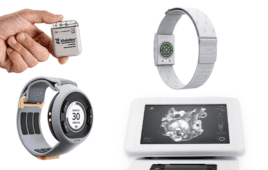Tel Aviv University research uses new technique to uncover the building blocks of kidney regeneration
Doctors and scientists have for years been astonished to observe patients with kidney disease experiencing renal regeneration. The kidney, unlike its neighbor the liver, was universally understood to be a static organ once it had fully developed.
Now a new study conducted by researchers at Sheba Medical Center, Tel Aviv University and Stanford University turns that theory on its head by pinpointing the precise cellular signalling responsible for renal regeneration and exposing the multi-layered nature of kidney growth. The research, in Cell Reports, was conducted by principal investigators Dr. Benjamin Dekel of TAU’s Sackler School of Medicine and Sheba Medical Center and Dr. Irving L. Weissman of Stanford University’s School of Medicine, working with teams of researchers from both universities.
“We wanted to change the way people thought about kidneys – about internal organs altogether,” said Dr. Dekel, who specializes in stem-cell research, genetics, and nephrology. “Very little is known even now about the way our internal organs function at the single cell level. This study flips the paradigm that kidney cells are static – in fact, kidney cells are continuously growing, all the time.”
Dr. Dekel began researching the subject three years ago while on sabbatical at Stanford University. While the laboratory experiments and stem cell research were conducted at Stanford, the results were analyzed by researchers at TAU and Stanford.
According to Dr. Dekel, scientists knew kidney cells could reproduce outside the body, but the physiological process taking place inside the body at the single cell level was never explored. Uncovering that process became the focus of his efforts.
Dr. Dekel and his research team conducted a study using a “rainbow mouse” model developed at Stanford’s Weissman lab, a mouse genetically altered to express one of four alternative fluorescent markers called “reporters” in each cell. The markers allowed researchers to trace cell growth in vivo —growth, they were surprised to find, that was sectional and multi-directional.
“We were amazed to find that renal growth does not depend on a single stem cell, but is rather compartmentalized,” said Dr. Dekel.
“Each part of the nephron is responsible for its own growth, each segment responsible for its own development, like a tree trunk and branches – each branch grows at a different pace and in a different direction.”
Using the rainbow mouse, the researchers were able to pinpoint a specific molecule responsible for renal cellular growth called the “WNT signal”. Once activated in specific precursor cells in each kidney segment, the WNT signal results in robust renal cellular growth and generation of long branches of cells.
“Our aim was to use a new technique to analyze an old problem,” said Dr. Dekel. “No one had ever used a rainbow mouse model to monitor development of kidney cells. It was exciting to use these genetic tricks to discover that cellular growth was occurring all the time in the kidney – that, in fact, the kidney was constantly remodelling itself in a very specific mode.”
Dr. Dekel and the research team are paving the way for novel cellular and molecular therapeutics to achieve human kidney regeneration and alleviate shortage of kidney organs for transplantation. “This study teaches us that in order to regenerate the entire kidney segments different precursor cells grown outside of our bodies will have to be employed,” he said. “In addition, if we were able to further activate the WNT pathway, then in cases of disease or trauma we could activate the phenomena for growth and really boost kidney regeneration to help patients. This is a platform for the development of new therapeutics, allowing us to follow the growth and expansion of cells following treatment.”




